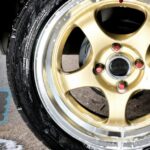When it comes to vehicle safety, maintaining a well-functioning braking system is of utmost importance. One crucial component of this system is brake fluid. In this article, we will delve into the world of DOT 3 brake fluid, exploring its characteristics, benefits, usage, and more. Join us as we unravel the secrets behind this essential automotive fluid.
Table of Contents
What is Brake Fluid?
Brake fluid is a type of hydraulic fluid essential for properly functioning a vehicle’s braking system. It is a specially formulated liquid that operates under high temperatures and pressures to transmit force from the brake pedal to the brake components, allowing the vehicle to slow down or stop.
The role of brake fluid in the braking system is to transfer the force the driver’s foot applies on the brake pedal to the brake calipers or wheel cylinders, which then apply pressure to the brake pads or brake shoes. This pressure is exerted on the brake rotors or brake drums, generating friction that slows down or stops the vehicle.
Brake fluid serves as the medium for transmitting this force because it is incompressible, meaning it does not compress under pressure. It is also designed to withstand high temperatures generated during braking and to resist absorbing water from the surrounding environment. Water absorption can decrease the fluid’s boiling point, which can result in brake fade or reduced braking performance.
Types of Brake Fluid
Several types of brake fluid are available, which are classified based on their chemical compositions and performance characteristics. The most commonly used types of brake fluid are:
- DOT 3: This glycol-based brake fluid is one of the most common types used in modern vehicles. It has a relatively low boiling point and is compatible with most brake systems. However, it is hygroscopic, meaning it absorbs moisture from the air over time.
- DOT 4: DOT 4 brake fluid is similar to DOT 3 but has a higher boiling point, making it more resistant to brake fade under heavy braking conditions. It is also hygroscopic.
- DOT 5: DOT 5 is a silicone-based brake fluid. It has a higher boiling point and is less hygroscopic compared to DOT 3 and DOT 4. It is commonly used in high-performance vehicles and is known for its stability at extreme temperatures. However, it is not compatible with systems designed for glycol-based fluids and requires a complete system flush before switching.
- DOT 5.1: DOT 5.1 is a glycol-based brake fluid with a higher boiling point than DOT 3 and DOT 4. It is compatible with systems designed for DOT 3 and DOT 4 fluids, and it offers improved performance under severe braking conditions.
What is DOT 3 Brake Fluid?
DOT 3 brake fluid is a type of glycol-based brake fluid commonly used in automotive braking systems. It meets the specifications set by the Department of Transportation (DOT) in the United States. DOT 3 brake fluid is one of the most widely used types due to its compatibility with various brake systems.
Click here to see top rated Dot3 Brake fluid on Amazon
DOT 3 Brake Fluid Composition
DOT 3 brake fluid is typically composed of a mixture of glycols, such as ethylene glycol or diethylene glycol, along with various additives to enhance its performance characteristics. These additives may include corrosion inhibitors and anti-foaming agents.
Key Characteristics of Brake Fluid Dot 3
Here are some key characteristics of DOT 3 brake fluid:
- Boiling Point: DOT 3 brake fluid has a relatively low boiling point, typically around 205°C (401°F). This means that under heavy braking or high-temperature conditions, the brake fluid can start to boil, forming vapor bubbles. This can cause brake fade and a decrease in braking performance.
- Hygroscopic Nature: DOT 3 brake fluid is hygroscopic, meaning it has a tendency to absorb moisture from the surrounding air over time. This moisture absorption can lead to a decrease in the boiling point of the fluid and increase the risk of brake fluid contamination. Therefore, it is important to replace DOT 3 brake fluid periodically as the vehicle manufacturer recommends.
- Compatibility: DOT 3 brake fluid is compatible with most automotive brake systems designed for glycol-based fluids. However, it is not compatible with systems designed for silicone-based DOT 5 brake fluid.
- Common Usage: DOT 3 brake fluid is widely used in passenger cars, light trucks, and motorcycles. It provides satisfactory braking performance for everyday driving conditions and meets the requirements of most vehicles on the road.
- Maintenance: It is crucial to check the brake fluid level and condition regularly. If the brake fluid appears dark, contaminated, or if the boiling point has been significantly reduced due to moisture absorption, it should be replaced promptly following the manufacturer’s recommendations.
DOT 3 brake fluid is a commonly used glycol-based fluid with specific characteristics and performance limitations. Following the vehicle manufacturer’s guidelines and specifications is essential when selecting and maintaining brake fluid for optimal braking system performance and safety.
Advantages of DOT 3 Brake Fluid
1. High Boiling Point
DOT 3 brake fluid has a relatively high boiling point compared to older brake fluid formulations. This high boiling point helps to prevent the fluid from boiling under normal operating conditions, even during prolonged or heavy braking. This is particularly beneficial for vehicles that may experience demanding braking situations, such as those used for towing or in mountainous terrains.
2. Compatibility with Brake Systems
DOT 3 brake fluid is designed to be compatible with most brake systems found in passenger cars, light trucks, and motorcycles. It works effectively with various types of braking components, such as calipers, wheel cylinders, master cylinders, and ABS (Anti-lock Braking System) units.
This compatibility makes it a suitable choice for a wide range of vehicles, ensuring reliable braking performance.
3. Wide Availability
DOT 3 brake fluid is widely available and can be easily found at automotive supply stores, service stations, and authorized dealerships. Its popularity and widespread usage make it convenient for vehicle owners to obtain and replace the brake fluid when needed.
This accessibility is particularly advantageous in emergency situations or when traveling to areas with limited resources.
These advantages contribute to the widespread use of DOT 3 brake fluid in various vehicles. However, it’s important to note that DOT 3 brake fluid does have limitations, such as its hygroscopic nature and lower compatibility with systems designed for silicone-based DOT 5 brake fluid.
Vehicle owners should always consult their vehicle manufacturer’s recommendations and requirements to ensure the appropriate brake fluid is used for optimal performance and safety.
Usage and Application
Recommended Vehicles for Brake Fluid Dot 3
DOT 3 brake fluid is recommended for use in a wide range of vehicles, including passenger cars, light trucks, and motorcycles. It is suitable for most everyday driving conditions and meets the requirements of the majority of vehicles on the road.
However, referring to the vehicle manufacturer’s recommendations is important to ensure compatibility and adherence to specific fluid requirements.
DOT 3 vs. Other Brake Fluid Grades
While DOT 3 brake fluid is commonly used, other brake fluid grades are also available, such as DOT 4, DOT 5, and DOT 5.1. Here are some key differences:
- DOT 3 vs. DOT 4: DOT 4 brake fluid has a higher boiling point than DOT 3, which increases brake fade resistance under severe braking conditions. DOT 4 is backward compatible with DOT 3 systems, meaning it can be used in vehicles designed for DOT 3 brake fluid. However, it’s important to fully flush the system before switching from DOT 3 to DOT 4.
- DOT 3 vs. DOT 5 and DOT 5.1: DOT 5 and DOT 5.1 brake fluids are silicone-based fluids with a higher boiling point than DOT 3 and DOT 4 fluids. They are known for their stability at extreme temperatures. However, they are not compatible with systems designed for glycol-based fluids like DOT 3 and DOT 4. Switching from glycol-based to silicone-based brake fluid requires a complete system flush.
How to Check and Add DOT 3 Brake Fluid
To check and add DOT 3 brake fluid, follow these steps:
- Locate the brake fluid reservoir under the hood. It is usually mounted on the master cylinder, which is connected to the brake pedal.
- Clean the reservoir cap to prevent dirt or debris from entering when opened.
- Remove the cap and check the fluid level. It should be between the minimum and maximum markings on the reservoir.
- If the level is low, carefully add DOT 3 brake fluid to bring it up to the proper level. Be cautious not to spill brake fluid on painted surfaces as it can cause damage.
- Securely reattach the reservoir cap.
Note: It’s essential to use the recommended type of brake fluid (DOT 3) as specified by the vehicle manufacturer. Using the wrong type of fluid can compromise braking performance and safety.
DOT 3 Brake Fluid Maintenance Tips
- Follow the vehicle manufacturer’s recommended brake fluid replacement intervals. Over time, brake fluid can absorb moisture, reducing its boiling point and compromising performance. Regular fluid replacement helps maintain optimal braking performance.
- Inspect the brake fluid for any signs of contamination or degradation. If the fluid appears dark, discolored, or contains debris, it should be replaced promptly.
- Ensure the brake fluid reservoir cap is tightly sealed to prevent moisture absorption from the air.
- Avoid mixing different types or brands of brake fluid, as this can lead to unpredictable performance and potential damage to the braking system.
- When adding brake fluid, use a clean and sealed container to avoid contamination.
- If you’re unsure about performing brake fluid maintenance yourself, consult a qualified mechanic or technician to ensure proper handling and maintenance procedures.
Following these maintenance tips helps ensure the reliability and performance of the braking system, promoting safe driving conditions.
Understanding Brake Fluid Specifications
DOT Standards and Specifications
The Department of Transportation (DOT) sets standards and specifications for vehicle brake fluids. These standards ensure safety and performance consistency across different vehicles and manufacturers.
The DOT standards most commonly encountered are DOT 3, DOT 4, DOT 5, and DOT 5.1. Each specification defines certain requirements for the brake fluid, including its chemical composition, boiling point, viscosity, and compatibility.
Choosing the Right Brake Fluid for Your Vehicle
To choose the right brake fluid for your vehicle, it’s important to refer to the manufacturer’s recommendations outlined in the vehicle owner’s manual. The manual will specify the appropriate DOT specification for the brake fluid.
Additionally, here are some factors to consider:
- Follow Manufacturer Recommendations: Stick to the brake fluid type and specification the vehicle manufacturer recommends. They have tested and designed the braking system to work optimally with a specific brake fluid grade.
- Consider Vehicle Usage: If your vehicle is subjected to heavy-duty or high-performance applications such as towing, racing, or mountainous driving, you may want to consider a brake fluid with a higher boiling point, such as DOT 4 or DOT 5.1. These fluids offer increased resistance to brake fade under demanding conditions.
- Avoid Mixing Fluid Types: It’s crucial not to mix different types or grades of brake fluid. Mixing fluids with different chemical compositions can lead to unpredictable reactions, compromised braking performance, and potential damage to the braking system.
- System Compatibility: Ensure the selected brake fluid is compatible with the brake system components in your vehicle. Some brake systems are designed for specific fluid types, and using an incompatible fluid can lead to seal damage or other issues. Always consult the owner’s manual or seek professional advice if you are unsure.
- Consider Climate and Environment: If you live in an area with extreme temperature variations, you may want to choose a brake fluid with a higher boiling point to ensure consistent performance in both hot and cold conditions.
Always follow the manufacturer’s recommendations for brake fluid type and specification. Choosing the appropriate brake fluid ensures compatibility, performance, and safety for your specific vehicle and driving conditions.
Safety Precautions and Handling
Proper Storage and Handling of Brake Fluid Dot 3
To ensure the safety and effectiveness of DOT 3 brake fluid, it is important to follow proper storage and handling procedures:
- Store brake fluid in a tightly sealed, original container in a cool and dry location away from direct sunlight, heat sources, and open flames.
- Keep brake fluid away from children and pets.
- Do not transfer brake fluid to an unlabeled or improper container. This can lead to confusion or accidental ingestion or misuse.
- Avoid contamination of the brake fluid with dirt, water, or other substances. Contaminated brake fluid may not perform as intended and can cause damage to the braking system.
- When opening the brake fluid container, ensure the surrounding area is clean to prevent debris from falling into the fluid.
- If brake fluid comes into contact with your skin, wash the affected area thoroughly with soap and water. Brake fluid can cause skin irritation.
- In case of accidental ingestion, seek immediate medical attention and provide the medical professional with the details of the brake fluid ingested.
Safety Measures When Working with Brake Fluid
When working with brake fluid, follow these safety measures to protect yourself and maintain a safe working environment:
- Wear protective gloves and safety glasses to prevent skin contact and eye irritation.
- Avoid inhaling brake fluid vapors. Work in a well-ventilated area or wear a respirator if necessary.
- Use a clean and proper container when draining or disposing of used brake fluid.
- Clean up any spills or drips immediately, as brake fluid can be slippery and pose a slipping hazard.
- Dispose of used brake fluid in accordance with local regulations. Do not pour it down the drain or onto the ground.
Always prioritize safety when handling brake fluid. If you are uncertain or uncomfortable performing brake fluid-related tasks, it is recommended to consult a qualified mechanic or technician for assistance.
Dot 3 Brake fluid vs Dot 4
| Criteria | DOT 3 Brake Fluid |
DOT 4 Brake Fluid
|
| Boiling Point | Lower boiling point (around 205°C / 401°F) |
Higher boiling point (around 230°C / 446°F)
|
| Compatibility | Compatible with most brake systems designed for DOT 3 |
Compatible with most brake systems designed for DOT 3
|
| Not compatible with systems designed for DOT 5 and 5.1 |
Not compatible with systems designed for DOT 5 and 5.1
|
|
| Fluid Performance | Satisfactory performance for everyday driving |
Increased resistance to brake fade under heavy braking conditions and high temperatures
|
| Moisture Absorption | Hygroscopic, absorbs moisture over time |
Hygroscopic, absorbs moisture over time
|
| Usage | Widely used in passenger cars, light trucks, and motorcycles |
Widely used in passenger cars, light trucks, and motorcycles
|
| Maintenance | Regular replacement recommended to maintain optimal performance |
Regular replacement recommended to maintain optimal performance
|
Boiling Point
DOT 4 brake fluid has a higher boiling point than DOT 3 brake fluid. DOT 3 typically has a boiling point around 205°C (401°F), while DOT 4 has a boiling point around 230°C (446°F).
The higher boiling point of DOT 4 brake fluid increases brake fade resistance under heavy braking conditions and high temperatures. This is particularly beneficial for vehicles subjected to demanding braking situations, such as those used for towing or in mountainous terrains.
Compatibility
Both DOT 3 and DOT 4 brake fluids are compatible with most brake systems designed for DOT 3 brake fluid. However, neither DOT 3 nor DOT 4 brake fluids are compatible with systems designed for silicone-based DOT 5 and DOT 5.1 brake fluids. If switching from DOT 3 to DOT 4 or vice versa, a complete system flush is required.
Fluid Performance
DOT 3 brake fluid provides satisfactory performance for everyday driving conditions. It meets the requirements of most vehicles on the road. DOT 4 brake fluid, on the other hand, offers increased resistance to brake fade under heavy braking conditions. This makes DOT 4 brake fluid more suitable for vehicles that experience demanding braking situations or high-performance applications.
Moisture Absorption
Both DOT 3 and DOT 4 brake fluids are hygroscopic, meaning they have a tendency to absorb moisture from the air over time. This moisture absorption can lead to a decrease in the boiling point of the fluid and increase the risk of brake fluid contamination. Regular brake fluid replacement is recommended to maintain optimal performance and reduce the effects of moisture absorption.
Usage
DOT 3 and DOT 4 brake fluids are widely used in passenger cars, light trucks, and motorcycles. They are suitable for most everyday driving conditions and meet the requirements of the majority of vehicles on the road.
DOT 4 brake fluid offers a higher boiling point and increased resistance to brake fade under demanding braking conditions compared to DOT 3 brake fluid.
However, both types are compatible with most brake systems designed for DOT 3 and require regular replacement to maintain optimal performance. It’s essential to consult the vehicle manufacturer’s recommendations to determine the appropriate brake fluid for your specific vehicle.
Dot 3 Brake Fluid Color
DOT 3 brake fluid is typically colorless or slightly amber in color when it is fresh and in its unused state. However, over time, with exposure to air and moisture, DOT 3 brake fluid can darken and turn a darker amber or brown color. This color change is a normal occurrence and is not necessarily an indication of brake fluid degradation or loss of performance.
It is important to note that the color of brake fluid alone is not a reliable indicator of its condition or suitability for use. Instead, following the manufacturer’s recommended brake fluid replacement intervals and performing regular inspections and testing to ensure the fluid meets the necessary specifications for safe and effective braking performance is recommended.
Popular Dot 3 Brake Fluid Brands
Prestone DOT 3 Brake Fluid
Prestone is a well-known brand in the automotive industry, offering a range of automotive fluids and maintenance products. Their DOT 3 brake fluid is formulated to meet the specifications and requirements for DOT 3 brake fluids.
It is designed to provide reliable braking performance and help prevent vapor lock, corrosion, and brake system failure. Prestone DOT 3 brake fluid is widely available and is compatible with most vehicles that require DOT 3 brake fluid.
Honda DOT 3 Brake Fluid
Honda is a renowned automobile manufacturer, and they also offer their own branded DOT 3 brake fluid. Honda DOT 3 brake fluid is specifically formulated to meet Honda’s strict standards and specifications.
It is designed to provide reliable and consistent braking performance for Honda vehicles. It is important to use the recommended brake fluid specified by the vehicle manufacturer to ensure compatibility and optimal performance.
Toyota DOT 3 Brake Fluid
Toyota, another prominent automaker, offers their own DOT 3 brake fluid. Toyota DOT 3 brake fluid is designed to meet Toyota’s specifications and requirements. It is formulated to provide efficient and reliable braking performance for Toyota vehicles.
Similar to other vehicle manufacturers, using the recommended brake fluid specified by Toyota is essential to maintain compatibility and optimal brake system performance.
Castrol DOT 3 Brake Fluid
Castrol is a well-known brand in the automotive lubricants and fluids industry. They offer a range of brake fluids, including DOT 3 brake fluid. Castrol DOT 3 brake fluid is formulated to meet the specifications and requirements for DOT 3 brake fluids.
It is designed to provide reliable braking performance, protection against brake system corrosion, and resistance to vapor lock. Castrol DOT 3 brake fluid is widely available and suitable for use in various vehicles that require DOT 3 brake fluid.
Mopar DOT 3 Brake Fluid
Mopar is the parts and service division of Fiat Chrysler Automobiles (FCA) and offers a range of automotive products, including brake fluids. Mopar DOT 3 brake fluid is formulated to meet the specific requirements and standards set by FCA. It is designed to deliver consistent braking performance, corrosion protection, and compatibility with FCA vehicles. Mopar DOT 3 brake fluid is recommended for use in FCA vehicles that require DOT 3 brake fluid.
Napa DOT 3 Brake Fluid
Napa is a trusted name in the automotive aftermarket industry, providing a variety of automotive products and services. Napa DOT 3 brake fluid is formulated to meet the requirements of DOT 3 brake fluids. It is designed to provide reliable braking performance and corrosion protection for the brake system. Napa DOT 3 brake fluid is widely available and suitable for use in different vehicles that require DOT 3 brake fluid.
Halfords DOT 3 Brake Fluid
Halfords is a retailer specializing in automotive parts, accessories, and services. They offer their own branded DOT 3 brake fluid. Halfords DOT 3 brake fluid is formulated to meet the specifications and requirements of DOT 3 brake fluids.
It is designed to provide reliable braking performance and protection against brake system corrosion. Halfords DOT 3 brake fluid is available at Halfords stores and is suitable for use in various vehicles that require DOT 3 brake fluid.
Frequently Asked Questions (FAQs)
What happens if I use the wrong brake fluid in my vehicle?
Using the wrong brake fluid can potentially lead to issues with the braking system. Different brake fluid types have different chemical compositions and performance characteristics.
Using an incompatible brake fluid can cause seal damage, reduced braking performance, increased risk of brake fade, and compromised safety. It is important to use the brake fluid specified by the vehicle manufacturer to ensure compatibility and optimal performance.
Can I mix DOT 3 and DOT 4 brake fluids?
Mixing DOT 3 and DOT 4 brake fluids is generally not recommended. Although both are glycol-based fluids and have similar compositions, they have different boiling points and additive packages.
Mixing them can alter the boiling point and performance characteristics, potentially leading to unpredictable braking performance and system damage. If you need to change brake fluid types, performing a complete system flush is best to remove any remnants of the previous fluid.
How often should I change my brake fluid?
Brake fluid should be changed periodically as part of regular vehicle maintenance. The recommended interval for brake fluid replacement can vary depending on the vehicle manufacturer and driving conditions.
As a general guideline, replacing brake fluid every 2-3 years is commonly suggested. However, it is important to consult the vehicle owner’s manual or manufacturer’s recommendations for the specific interval for your vehicle.
What are the signs of contaminated brake fluid?
Contaminated brake fluid may exhibit the following signs:
- Dark or murky appearance
- Presence of particles or debris in the fluid
- Corrosion or rust-colored fluid
- Increased moisture content
- Reduced braking performance or sponginess in the brake pedal
- If you observe any of these signs, it is advisable to have your brake fluid tested and, if necessary, replaced by a qualified mechanic or technician.
Can I substitute DOT 3 brake fluid with DOT 5?
No, DOT 3 and DOT 5 brake fluids are not interchangeable. DOT 5 brake fluid is silicone-based, whereas DOT 3 brake fluid is glycol-based. These two types of brake fluids have different chemical compositions and characteristics.
DOT 5 brake fluid should only be used in systems designed specifically for silicone-based fluids, such as some classic cars or motorcycles. It is important to follow the vehicle manufacturer’s recommendations and specifications for the correct brake fluid type to ensure safe and proper operation of the braking system.
Is DOT 3 brake fluid compatible with ABS systems?
Yes, DOT 3 brake fluid is compatible with ABS (Anti-lock Braking System) systems. ABS systems require brake fluid that meets certain specifications, including DOT 3.
DOT 3 brake fluid has the necessary properties to provide proper operation and performance in ABS-equipped vehicles. It is important to use brake fluid that meets the specifications recommended by the vehicle manufacturer to ensure compatibility and optimal ABS system performance.
Can I use DOT 3 brake fluid for racing or high-performance vehicles?
While DOT 3 brake fluid can be used for regular driving and most applications, it may not be the best choice for racing or high-performance vehicles. Racing or high-performance vehicles often undergo more demanding braking conditions, generating higher temperatures and greater stress on the brake system.
In such cases, a brake fluid with a higher boiling point, such as DOT 4 or higher, is generally recommended to increase brake fade resistance. It is advisable to consult with experts or professionals in the racing or high-performance industry for brake fluid recommendations specific to those applications.
How do I dispose of old brake fluid?
Brake fluid is considered hazardous waste and should not be disposed of improperly. It is important to follow local regulations for the proper disposal of brake fluid. Many automotive stores or service centers have recycling programs for used fluids, including brake fluid. You can contact your local waste management facility or recycling center for guidance on the proper disposal methods in your area.
Is it possible to use DOT 3 brake fluid in motorcycles?
Yes, DOT 3 brake fluid can be used in motorcycles that specify DOT 3 brake fluid for their braking systems. However, it is crucial to consult the motorcycle manufacturer’s recommendations and specifications to ensure DOT 3 brake fluid compatibility and suitability for your specific motorcycle model.
Some motorcycles may require a different type of brake fluid, such as DOT 4 or higher, due to their specific design or performance requirements.
Can I use DOT 3 brake fluid in extreme weather conditions?
DOT 3 brake fluid is designed to perform well under normal operating conditions. However, in extreme weather conditions, such as extremely high or low temperatures, it is advisable to use a brake fluid with a higher boiling point, such as DOT 4 or higher. This is because extreme temperatures can affect brake fluid’s performance and boiling point.
Using a brake fluid with a higher boiling point can help ensure the brake fluid maintains its effectiveness and performance even in challenging weather conditions. It’s important to refer to the vehicle manufacturer’s recommendations and consider your region’s specific climate and operating conditions when choosing the appropriate brake fluid.
Conclusion
In conclusion, DOT 3 brake fluid plays a vital role in maintaining the safety and performance of your vehicle’s braking system. Its high boiling point, compatibility with various brake systems, and wide availability make it a popular choice among motorists.
Remember to adhere to the recommended specifications and safety precautions when using and handling brake fluid. By prioritizing regular maintenance and understanding the importance of brake fluid, you can ensure a smooth and secure driving experience.
Click here to see top rated Dot3 Brake fluid on Amazon
Hi there! I’m Naomi O’Colman. I’ve got years of experience working at an auto repair shop here in Texas under my belt. On top of that, ever since I was a kid I’ve been passionate about the auto industry. Since I’ve joined the team at automotivegearz.com I’ve been enthusiastically sharing my passion and insights with my readers. I’m dedicated to delivering high quality content and helping you stay up to date with the latest automotive trends and products out there!







